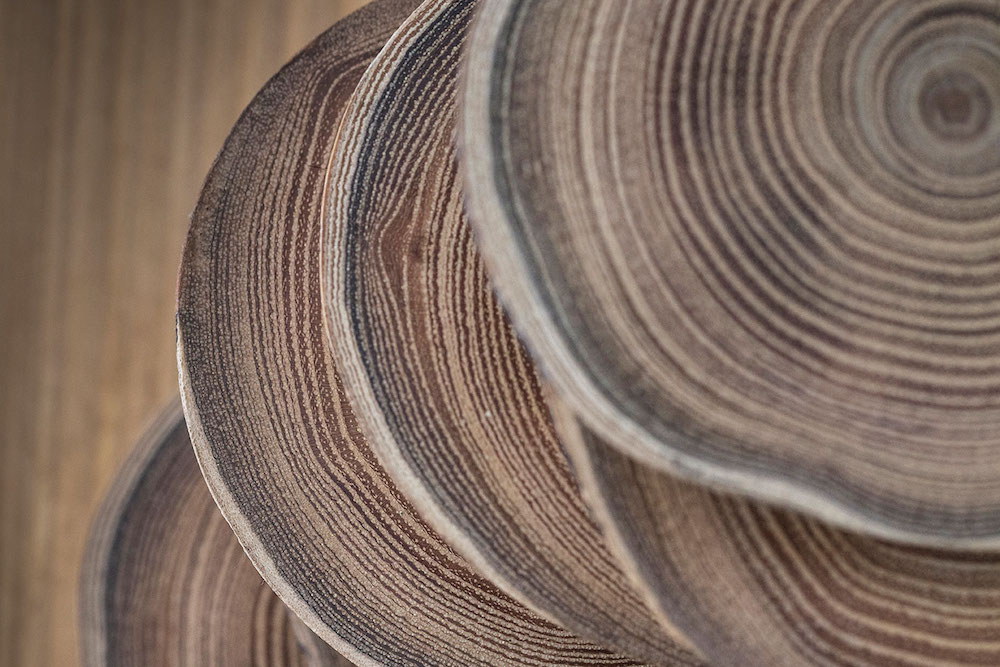Essences
#Vegetal
#Diversity
#MadeinFrance
Ash
Ash is a light wood with a particularly marked veining, which offers multiple designs depending on the part of the tree and the direction in which the object is cut. It also happens that following an external aggression (storm, disease, extreme cold...) the heart of the tree becomes denser and takes on colors that are very close to the olive tree; ; it is then called olive ash. It is a hard wood that is very well suited for food use, it is dense and very waterproof; once finished it has a very smooth texture; with usage, you will be able to very slightly feel the texture of its grain. It has a subtle and sweet smell of spices.
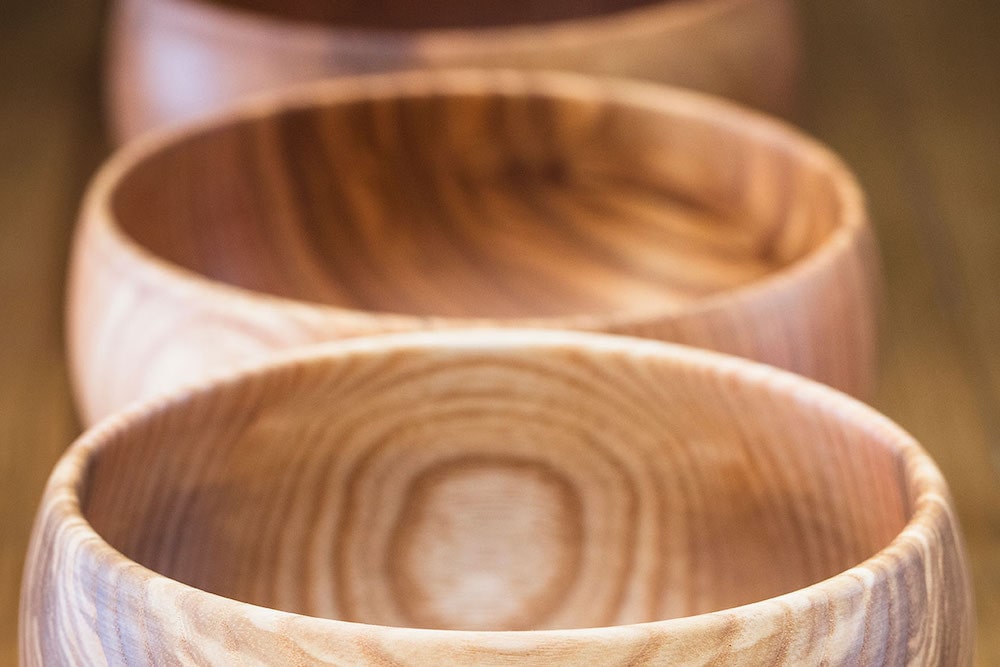
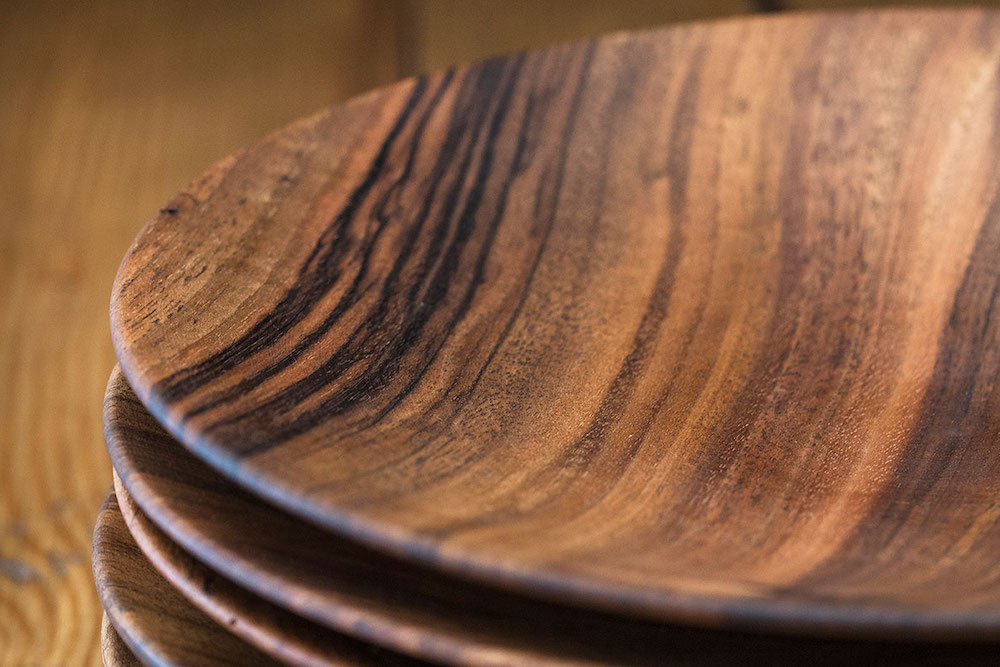
Walnut
This essence is known for its fine grain and has always been a recognized timber.
Cultivated since time immemorial, particularly in our region (Grenoble walnut), this perennial tree has the particularity of having a black heart and thus allows for sober or shimmering objects.
With time and the evolution of cultures, it becomes more difficult today to find walnut trees of quality. The selection of wood before sawing is therefore essential.
Its colors go from white to ebony black, passing through all shades of brown and grey, and sometimes there are plum or green reflections. It is a hard wood that is very well suited for food use, it is dense and quite waterproof; once finished it has a pleasant satin texture. Its smell is rather spicy.
Spalted Beech
An exceptional wood by nature, spalted beech has black mottles with shades of colors ranging from orange to light brown and even pink. These patterns are actually the work of fungi that develop in the beech tree in the months following its death. Taken in the direction of the fibers, it will give us black lines in the"feng shui" spirit, while cut in slices we would more likely see in it a map of the world. This wood, taking you straight into the world of the imagination, sometimes lets you see drawings of faces or silhouettes ....
Very hard to come by, the wood proposed at Gouj only comes from the forests of Chartreuse and was unearthed by our care.
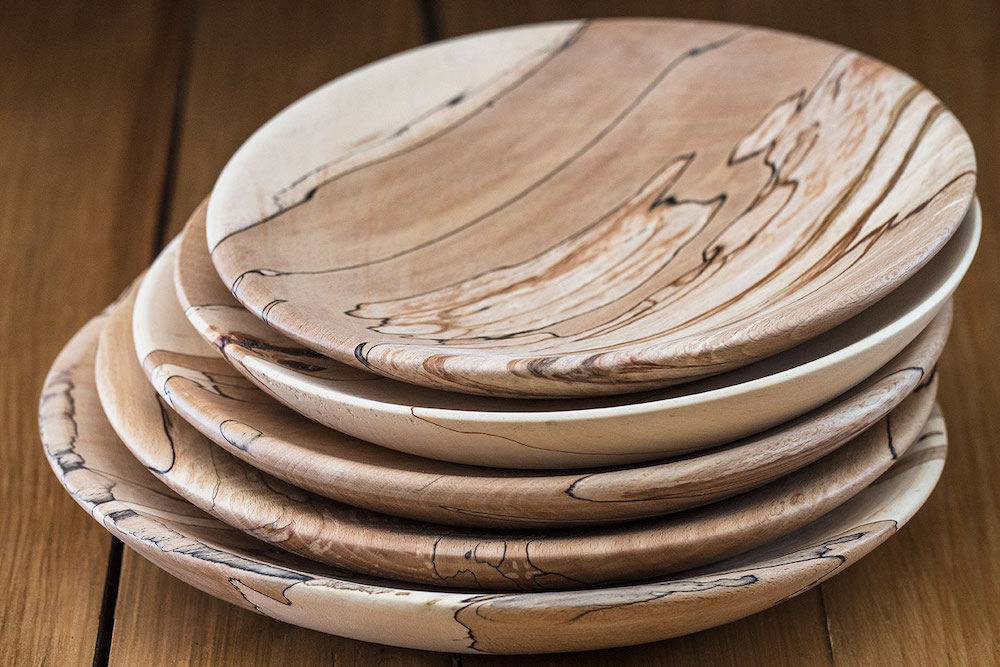
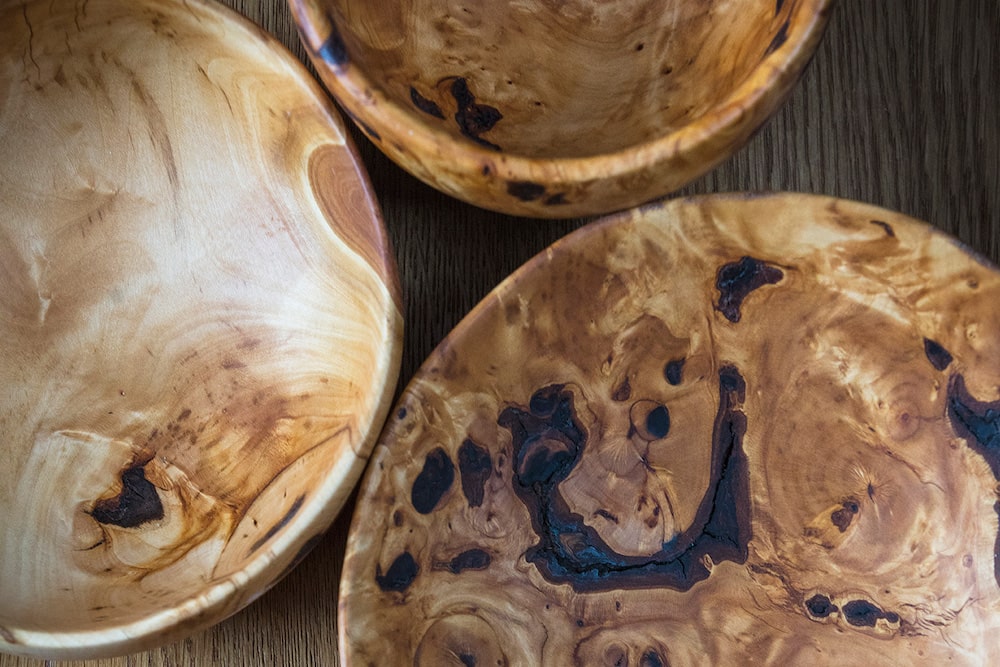
Topped Lime Tree
These are actually lime tree "trognes", trees that have been lopped off year after year and are healing as best they can by creating balls on the top of their trunk.
Dotted with knots and teeming with water seepage, once cut and dried they become incredible supports for the realization of unique works.
These woods are not commercialized and are therefore unearthed by us when the opportunity arises. Quantities are therefore limited.
Black locust
This wood, imported late from North America to make fence posts, is mostly known by craftsmen to unsharpen tools, because it is very high in silica. It is nevertheless a quality wood because it is durable and rot-proof, and particularly aesthetic when cut into slices: Its frank veining and its shimmering colors seem to hypnotize you... It takes on a beautiful brown patina as it ages.
